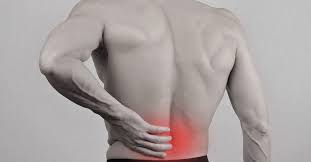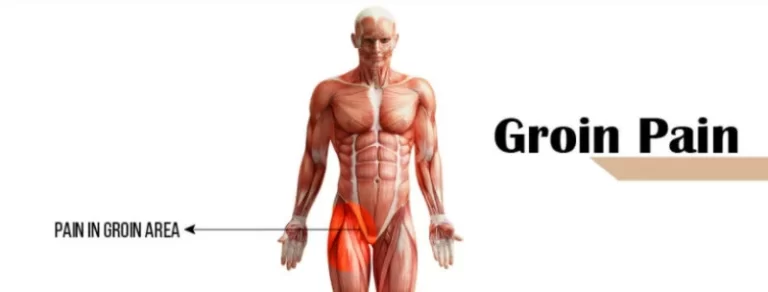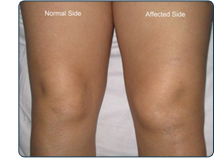Reye’s Syndrome
Reye’s syndrome is a rare but serious medical disease that mainly affects children and teenagers. It is characterized by the sudden onset of brain and liver dysfunction. The exact cause of Reye’s syndrome is not fully understood, but there is evidence to suggest that it may be triggered by certain viral infections, particularly influenza (flu) and varicella (chickenpox), in individuals who are genetically predisposed.
Reye syndrome is identified by acute noninflammatory encephalopathy and fatty degenerative liver failure. The syndrome was first described in 1963 in Australia by RDK Reye and described a few months later in the United States by GM Johnson. Cases with identical characteristics were described as early as 1929. Peak incidence was reported in 1979-80.
Reye syndrome frequently develops with a viral disease, especially an upper respiratory tract infection, influenza, varicella, or gastroenteritis, and is linked to aspirin use during the illness. The identification of drug responses, toxins, and inborn errors of metabolism (IEMs) that appear with symptoms similar to those of Reye syndrome, along with a sharp decline in the usage of aspirin among children, has made the diagnosis of Reye syndrome possible.
Table of Contents
What is Reye’s Syndrome?
An uncommon condition called Reye’s syndrome damages the liver and brain. Although it can occur at any age, children are the most frequently affected.
Reye’s syndrome typically affects kids who have recently had a viral infection, like the flu or chickenpox. The chance of developing Reye’s is considerably increased by using aspirin to treat such an illness.
Headaches can be brought on by the flu and chickenpox. Because of this, it’s crucial to avoid treating a child’s headache with aspirin. Your youngster could be at risk for Reye’s syndrome due to an undiagnosed viral infection.
A brain condition that is rapidly getting worse is Reye syndrome. Vomiting, personality changes, confusion, seizures, and loss of consciousness are among the signs of Reye syndrome. Jaundice rarely happens in the syndrome, but liver damage frequently does. Reye syndrome patients often die between 20 and 40 percent of the time, and roughly one-third of those who do survive have severe brain damage.
There is no known cause of Reye syndrome. It typically starts soon after a viral infection, such as the flu or chickenpox, has cleared up. The usage of aspirin (salicylate) is linked to almost 90% of instances in kids. Another risk factor is metabolic disorders that are inherited. Blood test alterations like a high blood ammonia level, a low blood sugar level, and a protracted prothrombin time are linked to the illness. In the syndrome, the liver is frequently enlarged.
Causes of Reye’s syndrome
Reye’s syndrome is a condition that most frequently affects kids and teenagers who are recuperating from a viral illness, such as the flu, chickenpox, or the common cold. Unknown is the condition’s true genesis.
There is no known cause of Reye syndrome. It typically starts soon after a viral infection, such as the flu or chicken pox, has cleared up. The usage of aspirin (salicylate) is linked to almost 90% of instances in kids. Another risk factor is metabolic disorders that are inherited.
Epidemiological research has demonstrated the connection to aspirin. In the 1980s, as genetic testing for inherited metabolic disorders became available in industrialized countries, the diagnosis of Reye syndrome drastically decreased. The majority of the 49 Reye syndrome survivors exhibited a variety of metabolic issues, particularly impairments in medium-chain acyl-CoA dehydrogenase and fatty-acid oxidation abnormalities.
Aspirin has typically been used to treat their symptoms, therefore it could cause Reye’s syndrome.
Aspirin
Although there is a link between using aspirin to treat viral diseases and the emergence of Reye syndrome, there is no animal model of the phenomenon in which aspirin is the causative agent.
There are several ways that aspirin may cause or worsen mitochondrial damage, which appears to be the origin of the severe symptoms of Reye syndrome, at least in the liver. One of the main reasons why aspirin has not been advised for use in children and teenagers, the age range for which the risk of long-term adverse effects is highest, is a probably increased chance of developing Reye syndrome.
It is believed that mitochondria, which are microscopic structures found inside cells, suffer damage in Reye’s syndrome.
Energy is produced by mitochondria, which are crucial for the healthy operation of the liver.
The liver starts to deteriorate if its energy source is cut off. This could result in a potentially harmful buildup of toxic substances in the blood, endangering the entire body and enlarging the brain.
Signs and Symptoms of Reye’s Syndrome:
The Reye syndrome develops in five stages:
Stage 1
- Vasoconstrictive rash on the palms and soles of the feet
- Persistent, heavy vomiting that is not treated by not eating
- Generalized lethargy
- Confusion
- Nightmares (possible symptom)
- No fever is usually present
- Headaches
Stage II
- Deep lethargy
- Delirium
- Confusion
- Combative behavior
- Stupor
- Hyperventilation
- Fatty liver (found on biopsy)
- Hyperactive reflexes
Stage III
- Continuation of Stage I and II symptoms
- Possible coma
- Possible cerebral edema
- Possible seizures
- Rarely, respiratory arrest
- Decorticate posturing
Stage IV
- Seizures
- Decerebrate posturing
- Deepening coma
- Dilated pupils with minimal response to light
- Loss of oculocephalic reflexes
- Minimal but still present liver dysfunction
Stage V
- Very rapid onset following stage IV
- Areflexia
- Deep coma
- Dilated, nonreactive pupils
- Isoelectric EEG
- Respiratory arrest
- Seizures
- Multiple organ failure
- Flaccidity
- Hyperammonemia (above 300 mg/dL of blood)
- Death
Diagnosis:
A doctor might suspect Reye’s syndrome after detecting a viral illness followed by observing symptoms of Reye’s syndrome, like vomiting and changes to your child’s behavior, including becoming easily agitated, confused, or disoriented. Diagnostic procedures eliminate other illnesses with comparable symptoms
A child’s Reye’s syndrome diagnosis will have a severity level marked by a Roman numeral, with I (one) being the least severe and V (five) being the most severe.
A healthcare provider will offer several tests to confirm your child’s diagnosis. Tests could include:
Laboratory tests to check for ammonia levels in their blood or a buildup of toxins in their urine.
Doctors don’t have a specific test for Reye’s. They usually do urine and blood tests. They also perform screenings for fatty acid-related diseases.
The following diagnostic procedures may be used to confirm the Reye syndrome diagnosis:
- Blood and liver function tests
- Urine and stool tests
- Skin biopsies (in which a doctor scrapes a small skin sample to test)
- CT or MRI scans (which also allow for the exclusion of other issues)
- Liver biopsy: A small sample of liver tissue is extracted during a liver biopsy and is then examined.
- Electroencephalograms (EEGs): Use scalp electrodes to continuously record the electrical activity of the brain.
- Spinal tap, or lumbar puncture: Involves inserting a specialized needle into the spinal canal in the lower back. The pressure inside the brain and spinal canal can then be calculated. It is possible to take a small sample of cerebral spinal fluid (CSF) and test it to see whether there is an infection or other issues. The substance that covers the child’s brain and spinal cord is called CSF.
- Intracranial pressure: Measures the pressure inside the child’s head using intracranial pressure monitoring (ICP).
How to Prevent Reye’s Syndrome?
Reye’s syndrome is associated with aspirin use, therefore you can avoid it by not administering aspirin to kids, especially if they’re under 16 years old. Give your child aspirin only after discussing the intended course of therapy with your healthcare practitioner, even if your child requires it to treat a condition
Always check labels for age requirements before giving medicine to the child, or talk with the healthcare provider to make sure the medicine is safe for the child to take.
When administering aspirin to kids or teenagers, use caution. Although children above the age of three can safely take aspirin, it should never be given to children or teenagers who have the flu or chickenpox symptoms. This contains plain aspirin and medicines that contain aspirin.
To identify which neonates are more likely to develop fatty acid oxidation disorders and Reye’s syndrome, some hospitals and healthcare facilities examine newborns for these conditions. Children with recognized abnormalities of fatty acid oxidation shouldn’t consume aspirin or anything containing aspirin.
Always read the label before giving a youngster a prescription. This includes non-prescription items and alternative or herbal treatments. Alka-Seltzer is one surprise product that contains aspirin.
Aspirin is known by various other names, including:
-Acetylsalicylic acid.
-Acetylsalicylate.
-Salicylic acid.
-Salicylate.
For the treatment of fever or pain related to the flu, chickenpox, or another viral illness, consider giving the child a safer alternative to aspirin. Acetaminophen (Tylenol, among others) or ibuprofen (Advil, Motrin, among others) for babies or young children may be included in this.
The general rule about aspirin has an exception. Certain chronic disorders, such as Kawasaki disease, may necessitate long-term treatment with aspirin-containing medications in children and teenagers.
Make sure the child’s vaccinations are up to date if they must take aspirin. This includes a yearly flu shot as well as two doses of the chickenpox vaccine. Reye’s syndrome can be stopped or prevented by avoiding these two viral infections.
Differential Diagnosis:
- Drug toxicity
- Hypoglycemia
- Encephalitis
- Meningitis
- Lead and other heavy metal toxicities
- Intracranial bleeding
- Mushroom toxicity
Complications of Reye’s syndrome:
- Seizures
- Cerebral herniation
- Aspiration pneumonia
- Cardiac arrhythmias
- Cardiovascular collapse
- Pancreatitis
- Gastrointestinal bleeding
- Respiratory failure
- Renal failure
- Sepsis
- Death
Treatment of Reye’s syndrome
Reye syndrome is a disease that advances quickly, and early intervention may be necessary to maintain hemodynamic stability and proper respiratory function. These might involve the insertion of a central venous catheter, intubation of the trachea, and the use of a Foley catheter to track urine output. It may also be necessary to perform further specialized tests like liver biopsy and intracranial pressure monitoring.
Medical treatment:
Reye syndrome treatment is mostly supportive and necessitates constant monitoring of numerous clinical parameters, which is best carried out in an intensive care unit environment. The following serum deviations may require aggressive therapy to be corrected:
With a blood glucose target of 100–120 mg/dl, hypoglycemia may be treated with dextrose-containing fluids (D50, D10, D5, etc.).
Treatment options for acidosis include breathing control and sodium bicarbonate (care must be taken not to overcorrect or correct too rapidly).
Sodium polystyrene sulfate (Kayexalate) or phenylacetate-sodium benzoate (Immunol) are two medications that can be used to treat hyperammonemia, however, hemodialysis may be necessary if the level is higher than 500 mcg/dl.
Cryoprecipitate, fresh frozen plasma (FFP), or vitamin K may be used to treat coaguloathy (particularly before invasive operations or with clinically substantial bleeding).
Treatment strategies for elevated ICP may include the following:
- Raising the bed’s head by 30 degrees
- Putting a ventilator or an endotracheal tube in their windpipe to speed up their breathing (hyperventilation).
- Control of temperature to avoid rigors and increased cerebral metabolism
- ICP observing the use of Lasix
- careful fluid management to avoid becoming overhydrated
- Anaesthesia and analgesia
- Hypertonic saline or mannitol
- Treatment of seizures and subsequent prevention
- Taking drugs (ammonia detoxicants) to lower the ammonia levels in their blood.
- Using medication to keep their blood sugar (glucose) levels stable.
- Improving blood coagulation by taking vitamin K or obtaining plasma infusions.
Your child will be admitted right away to the critical care unit for treatment if Reye’s syndrome is diagnosed in your child. To ensure that the medicine is working, the care team for your kid will keep track of all of their vital organs and their body temperature.
Early Medical treatment:
Reye syndrome cannot be cured, however, there are several therapies available. Early identification is essential for Reye syndrome medical management.
A child with Reye syndrome needs to be admitted right away to the hospital’s intensive care unit and must be closely monitored by the medical staff. This is a dangerous condition that could get worse very quickly.
The purpose of treatment is to monitor the child’s head pressure, lower it, and give him or her supportive care (symptom relief). Drugs are used to treat possible diseases like fever, convulsions, and even brain inflammation.
The severity of the ailment and the existence of additional organ system issues that could have an impact on the kid determine the scope of the issue. In extreme circumstances, your child may need a breathing machine to help them breathe more easily.
Early treatment is crucial for Reye’s since it can be a dangerous condition and a medical emergency. Hospitalization is the normal course of treatment. Children with serious conditions will receive critical care unit treatment.
Reye’s syndrome has no known cure, thus care is supportive and aimed at easing symptoms and complications. Doctors will monitor the child’s electrolyte balance and hydration levels. The condition of the heart, lungs, and liver will be assessed, and liver function will be closely watched. To treat seizures and associated negative effects, the proper medications will be given to children who have them.
Reye’s syndrome is frequently treated with the following medications:
- Increasing glucose metabolism with insulin
- Diuretics to remove more fluid and corticosteroids to lessen brain edema
- If the child’s breathing is ineffective or excessively sluggish, a breathing machine or respirator may be utilized in severe cases.
The outcome for the youngster with Reye’s syndrome is better the earlier the condition is identified. A person who develops the disease to its later stages could suffer severe brain damage.
Summary:
Reye’s syndrome is a rare condition that primarily affects children and teenagers recovering from viral infections, such as influenza or chickenpox. It involves acute brain and liver inflammation and is associated with the use of aspirin during these infections. Symptoms include persistent vomiting, confusion, lethargy, seizures, and loss of consciousness.
Prompt medical attention is crucial as Reye’s syndrome can be life-threatening. Treatment involves hospitalization, monitoring, and supportive care. The syndrome has become rarer due to increased awareness and avoidance of aspirin use in children. It is important to follow medication guidelines and seek medical advice if concerning symptoms arise.
FAQs:
What causes Reye’s syndrome?
Reye’s syndrome’s specific etiology is unknown, but it most frequently affects kids and teenagers who are recuperating from a viral infection, such as the flu, chicken pox, or a cold. Aspirin has typically been used to treat their symptoms; hence, aspirin may cause Reye’s syndrome.
What is Reye’s syndrome triad?
Reye syndrome is a neurological disorder that is deteriorating quickly. Reye syndrome symptoms can include nausea, personality changes, confusion, seizures, and unconsciousness. Jaundice is normally not present in the syndrome, however, liver damage frequently is.
Is Reye syndrome caused by drugs?
Reye syndrome or Reye-like syndrome has been linked to acetaminophen, expired tetracycline, valproic acid, warfarin, zidovudine didanosine, and certain neoplastic medications. Mefenamic acid and sodium diclofenac are two examples of nonsteroidal anti-inflammatory medications that are thought to cause or exacerbate Reye syndrome.
What age is aspirin Reye syndrome?
It primarily affects those under the age of 18, especially kids between the ages of four and twelve. Rarely, children or young adults may be impacted.
How do you diagnose Reye’s syndrome?
The following diagnostic procedures may be used to confirm the Reye syndrome diagnosis: liver and blood tests are conducted. stool and urine testing. liver biopsy: the removal and examination of a tiny sample of liver tissue.






2 Comments